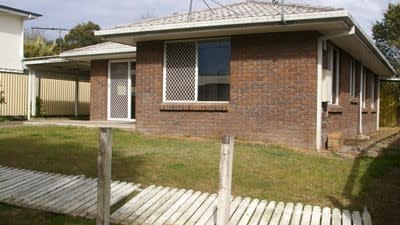Queensland market doing it tough six months after floods
As we look to what's ahead for 2012, Property Observer is republishing some of our most noteworthy stories of 2011.
Ghost towns, people living in the husks of houses and mum and dad investors unable to make ends meet. This is the picture of many Queensland suburbs six months after the floods.
All indicators show that sales activity in flood-affected Queensland has ground to a halt.
Values have plunged. Tenants are scarce on the ground.
Economic forecaster BIS Shrapnel does not expect any improvements for another six months to a year.
“Confidence in Queensland is totally shot and the flood-affected areas are really doing it tough,” BIS Shrapnel director Robert Mellor says. “Construction has fallen so low that it is in line with rates of 15 years ago and close to recession levels of the ’90s. It’s pretty diabolical.”
According to Mellor, there has been no increase in housing stock and no increases in the sale of building materials. “There is very little evidence of significant rebuilding going on,” he says.
Oddly enough, the recovery in some suburbs is led by tradies buying up wrecked houses with a view to renovate and hold them as investments, hoping the memories fade fast.
Local Ipswich agent Peter Mendoza says prices in some streets have dropped 45%.
“A house in Jacaranda Street, East Ipswich recently sold for $150,000. Before the floods it was listed for $265,000,” he says.
Residential property prices in Ipswich and the Lockyer Valley have tumbled, with the marketing ads tinged with desperate terms including “urgent sale”, “make an offer” and “huge price reduction” on houses with asking prices of less than $200,000.
REIQ chairwoman Pamela Bennett says people are holding out for as long as possible by living in what is left of their houses or in caravans, unable to afford rent, and small investors are facing impossible financial pressure.
In North Booval, a suburb of Ipswich, houses languish untouched with nothing but the grass showing healthy growth.
“Only people with contacts in the building industry are getting work done – others are trying the weather it out. Towns like North Booval are ghost towns, with the uninsured living in damaged buildings unable to qualify for assistance. Those houses that have been fixed cannot attract tenants because nobody wants to live somewhere so depressing,” Bennett says.
Many houses once worth $280,000 are now not worth their mortgages, and banks will not lending for rebuilding.
“Such a considerable sector had no flood insurance, and when they do get grants they often do not cover the cost of damage. Those properties that do sell sell for land value,” Bennett says.
According to REIQ’s March quarter figures, the Brisbane suburbs of Moorooka, Graceville and Kenmore have all fallen by about 5%, but the number of sales in other areas is so low that recording accurate statistics is difficult.
Even the non-flood-affected prestige area of Paddington has suffered, with median prices down by 30% to $695,000, reflecting the overall softness of the Queensland market, according to the REIQ data.